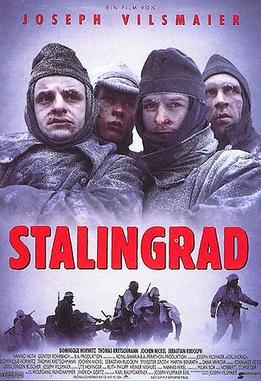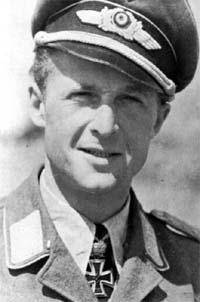
The Battle of Stalingrad was a major battle on the Eastern Front of World War II where Nazi Germany and its allies unsuccessfully fought the Soviet Union for control of the city of Stalingrad in Southern Russia. The battle was marked by fierce close-quarters combat and direct assaults on civilians in air raids, with the battle epitomizing urban warfare. It was the bloodiest battle of the Second World War, with both sides suffering enormous casualties. Today, the Battle of Stalingrad is universally regarded as the turning point in the European theatre of war, as it forced the Oberkommando der Wehrmacht to withdraw considerable military forces from other areas in occupied Europe to replace German losses on the Eastern Front, ending with the rout of the six field armies of Army Group B, including the destruction of Nazi Germany's 6th Army and an entire corps of its 4th Panzer Army. The Soviet victory energized the Red Army and shifted the balance of power in the favour of the Soviets.

Stalingrad is a 1993 German anti-war film directed by Joseph Vilsmaier. It follows a platoon of German Army soldiers transferred to the Eastern Front of World War II, where they find themselves fighting in the Battle of Stalingrad.

Werner Georg Emil Lucas was a German Luftwaffe military aviator during World War II, a fighter ace credited with 106 enemy aircraft shot down. The majority of his victories were claimed over the Eastern Front, with one claim over the Western Front.

Jagdgeschwader 3 "Udet" was a Luftwaffe fighter wing of World War II. The Geschwader operated on all the German fronts in the European Theatre of World War II. It was named after Ernst Udet, an important figure in the development of the Luftwaffe, in 1942.

Volgograd International Airport is an airport located 15 km northwest of the city of Volgograd, formerly Stalingrad, in Russia. It comprises a civilian airport built on top of an older military runway, now demolished. The terminal area parks 42 medium/large aircraft and 91 small aircraft.

Wolf-Dietrich Wilcke was a German Luftwaffe pilot during World War II, a fighter ace credited with 162 enemy aircraft shot down in 732 combat missions. He claimed the majority of his victories over the Eastern Front, and 25 over the Western Front, including four four-engined bombers.
Kampfgeschwader 55 "Greif" was a Luftwaffe bomber unit during World War II. KG 55 was one of the longest serving and well-known in the Luftwaffe. The wing operated the Heinkel He 111 exclusively until 1943, when only two staffeln of its four Gruppen (Groups) used the Junkers Ju 88C.

Kara-Suu is a district of Osh Region in south-western Kyrgyzstan. Its area is 3,616 square kilometres (1,396 sq mi), and its resident population was 448,608 in 2021. The administrative seat lies at the city Kara-Suu.
The Soviet 21st Army was a field army of the Red Army during World War II.
Nikolai Georgievich Abramashvili was a Soviet fighter ace who fought in World War II.
The Pitomnik airfield was an airfield in Russia. During the Second World War, it was the primary of seven airfields used by the German Wehrmacht during the Battle of Stalingrad.
The Tatsinskaya Airfield was the main airfield used by the German Wehrmacht during the Battle of Stalingrad to supply the encircled 6th Army from outside.
Johann-Hermann Meier was a German Luftwaffe military aviator during World War II, a fighter ace credited with 77 enemy aircraft shot down in 305 combat missions. All of his victories were claimed over the Eastern Front.
Berthold Graßmuck was a Luftwaffe ace and recipient of the Knight's Cross of the Iron Cross during World War II. The Knight's Cross of the Iron Cross was awarded to recognise extreme battlefield bravery or successful military leadership. Berthold Graßmuck was shot down by Soviet flak on 18 October 1942 over Pitomnik Airfield during the Battle of Stalingrad. During his career he was credited with 65 victories.

The 252nd Rifle Division was the eighth of a group of 10 regular rifle divisions formed from cadres of NKVD border and internal troops as standard Red Army rifle divisions, very shortly after the German invasion, in the Moscow Military District.

The 293rd Rifle Division began service as a Red Army rifle division shortly after the German invasion. It was largely based on what would become the shtat of July 29, 1941. The division was initially assigned to 40th Army of Southwestern Front when that Army was formed on August 26. It served in several clashes with the German 2nd Panzer Group in the vicinity of Korop and was therefore outside the area encircled by 2nd and 1st Panzer Groups in September, spending the winter along the front near Kursk. It fought in the unsuccessful Soviet offensive on Kharkiv in May, 1942 as part of 21st Army, suffering significant casualties in the process. During June and July the remnants of the division fought along the Don River against the German summer offensive until it was pulled back into the Reserve of the Supreme High Command for rebuilding. It returned to the front in October, again as part of 21st Army, near Stalingrad, where it played a leading role in the encirclement and destruction of German 6th Army in January 1943, for which it was raised to Guards status as the 66th Guards Rifle Division as the battle was still ongoing.

Red Road from Stalingrad is a war memoir written by Mansur Abdulin, published in Russian in 1991 and in English in 2004. In it, Abdulin recounts his service in the 293rd Rifle Division, which became the 66th Guards Rifle Division, in 1942-43. Abdulin joined the division while it was rebuilding in Buzuluk in the late summer of 1942, and he served for about a year, until he was severely wounded in action in November, 1943, during the Battle of the Dnieper. Abdulin's book is one of the first of many memoirs of ordinary Red Army soldiers that have been published in English since the end of the Cold War, giving English readers a deeper understanding of the Soviet-German War from the Soviet side.
The following events occurred in September 1942:
The 298th Rifle Division was an infantry division of the Soviet Union's Red Army during World War II, formed three times.
Aleksey Fyodorovich Naumov was a Soviet tank commander during World War II. Naumov graduated from the Chelyabinsk Tank School in November 1942 and was soon assigned to the Don Front to command a KV-1 heavy tank. Attached to the 344th Tank Battalion, he and his crew distinguished themselves on 21 January 1943, during the final stages of the Battle of Stalingrad. Soviet forces had been attempting to take the Pitomnik Airfield and the farmstead of Novaya Nadezhda, near Stalingrad. When he crew ran out of ammunition, German soldiers poured gasoline on his tank and set it on fire, killing the entire crew. When Soviet forces took Novaya Nadezhda, the remains of Naumov and his men were buried nearby. He and several other members of his crew were posthumously awarded the title Hero of the Soviet Union.











